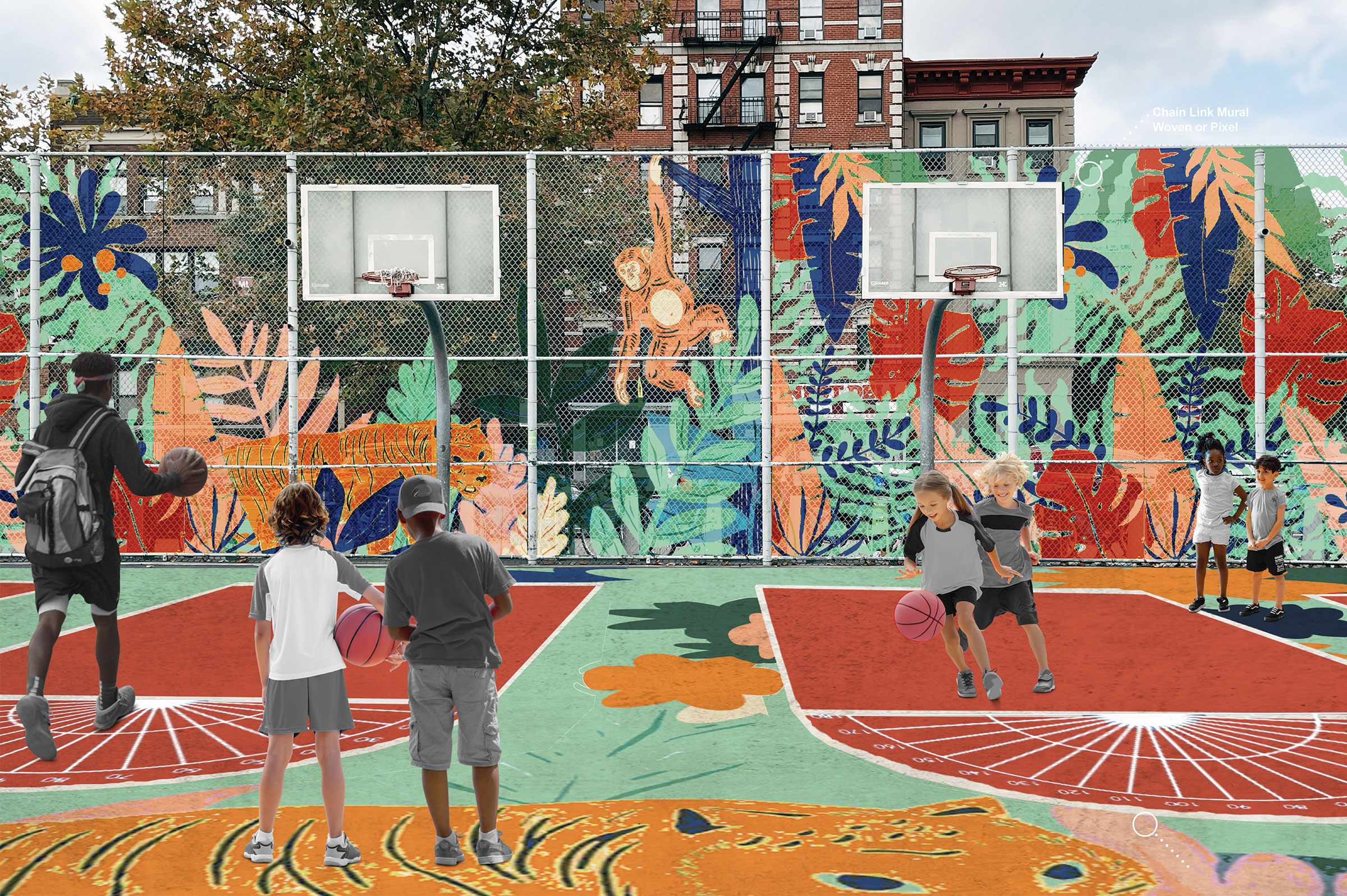Within the dense urban environment of New York City, school playgrounds are essential places for both recreation and learning, and require thoughtful design to make the most of their limited footprint and resources. Pratt Institute students recently worked with elementary and middle public school students and teachers in the communities of East Harlem and Brownsville to hear their ideas for activating their existing schoolyards to better promote physical activity and wellness through design.
The fall iteration of the studio, called Learning Scapes, was created in partnership with the New York City Department of Health and Mental Hygiene (NYC DOHMH)’s Active Design in Schools Program, funded in part by New York State’s Creating Healthy Schools and Communities Grant, which aims to increase equitable access for youth to environments that promote health. This studio was the first course organized as part of the School of Design’s new Co-Design initiative, which engages Pratt students in working collaboratively with community stakeholders through all phases of the design process.
Dean of the School of Design Anita Cooney announced the Co-Design initiative in March 2022. It bolsters the School’s ongoing commitment to instilling civic and community engagement in the classroom. “Civic engagement is the fundamental context for our creative efforts that recognize design as both subject and verb: design connects, design enables, design sustains, design empowers, and design humanizes,” Cooney said.
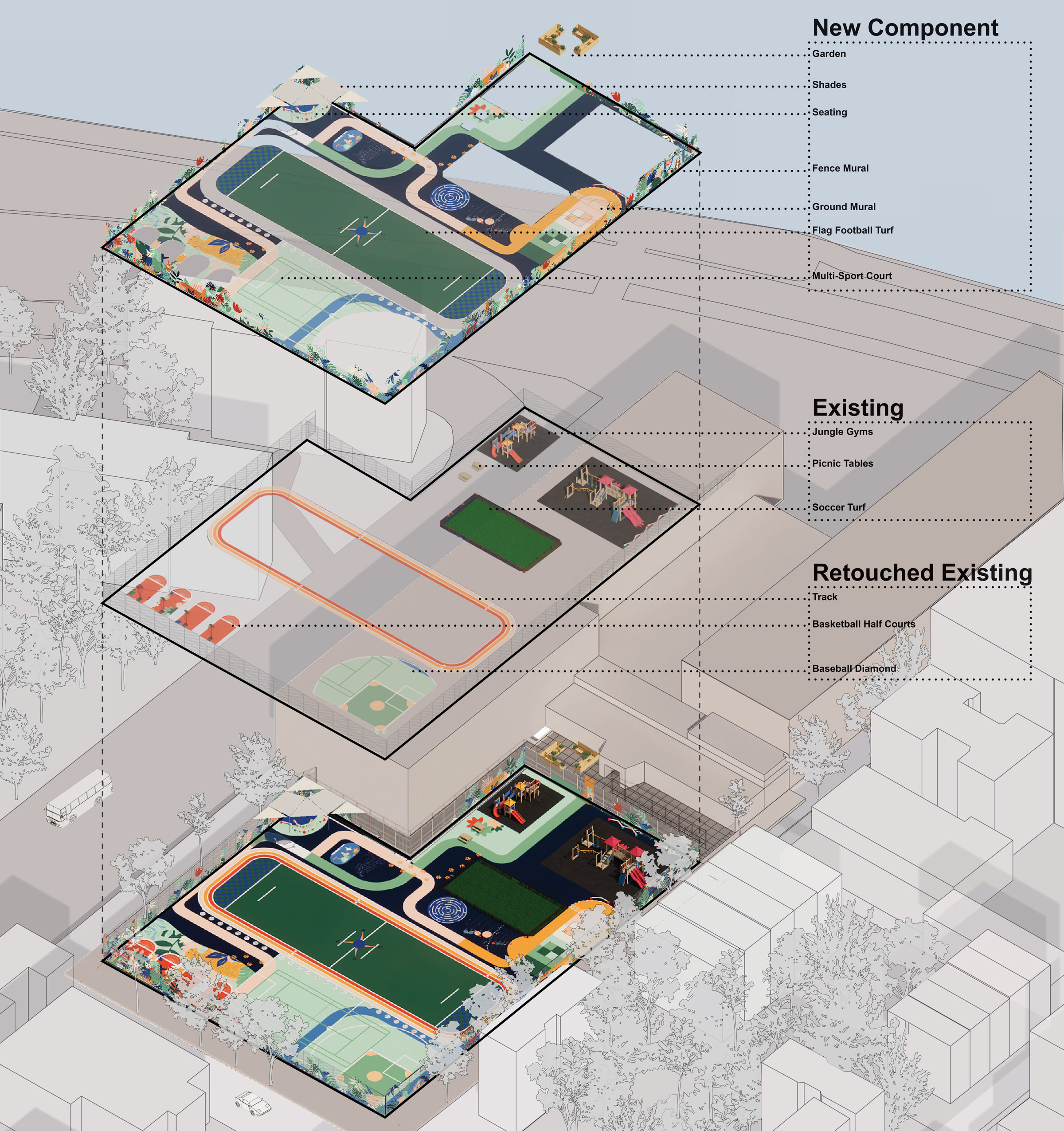
The Co-Design initiative is concentrating on K-12 schools under the leadership of Irina Schneid, an assistant professor of interior design who became the School of Design’s first assistant professor of community-engaged learning in the fall of 2022. Schneid, who is the founder and design director of Impact Wrkshp, a community-based social impact organization that works with K-12 schools, was previously involved in assessing community-engaged pedagogy across the Institute as part of a 2021 faculty fellowship from the Center for Teaching and Learning. Building upon Pratt’s extensive legacy of civic engagement, Irina identified an opportunity for inter-departmental collaboration between the School of Design students and local youth to build community within and beyond the classroom. With this in mind, Co-Design is interdisciplinary, participatory, and open to students from every major within the School of Design.
“Co-Design is a methodology for actively involving a broad range of people directly affected by design into its goal setting, research, and design decision-making process,” Schneid said. “Focusing our Co-Design efforts on K-12 partnerships, our newly launched Co-Design courses build a foundation for continuous and sustainable engagement with local schools and bring together undergraduate and graduate students from across all departments in the School of Design into one classroom.”
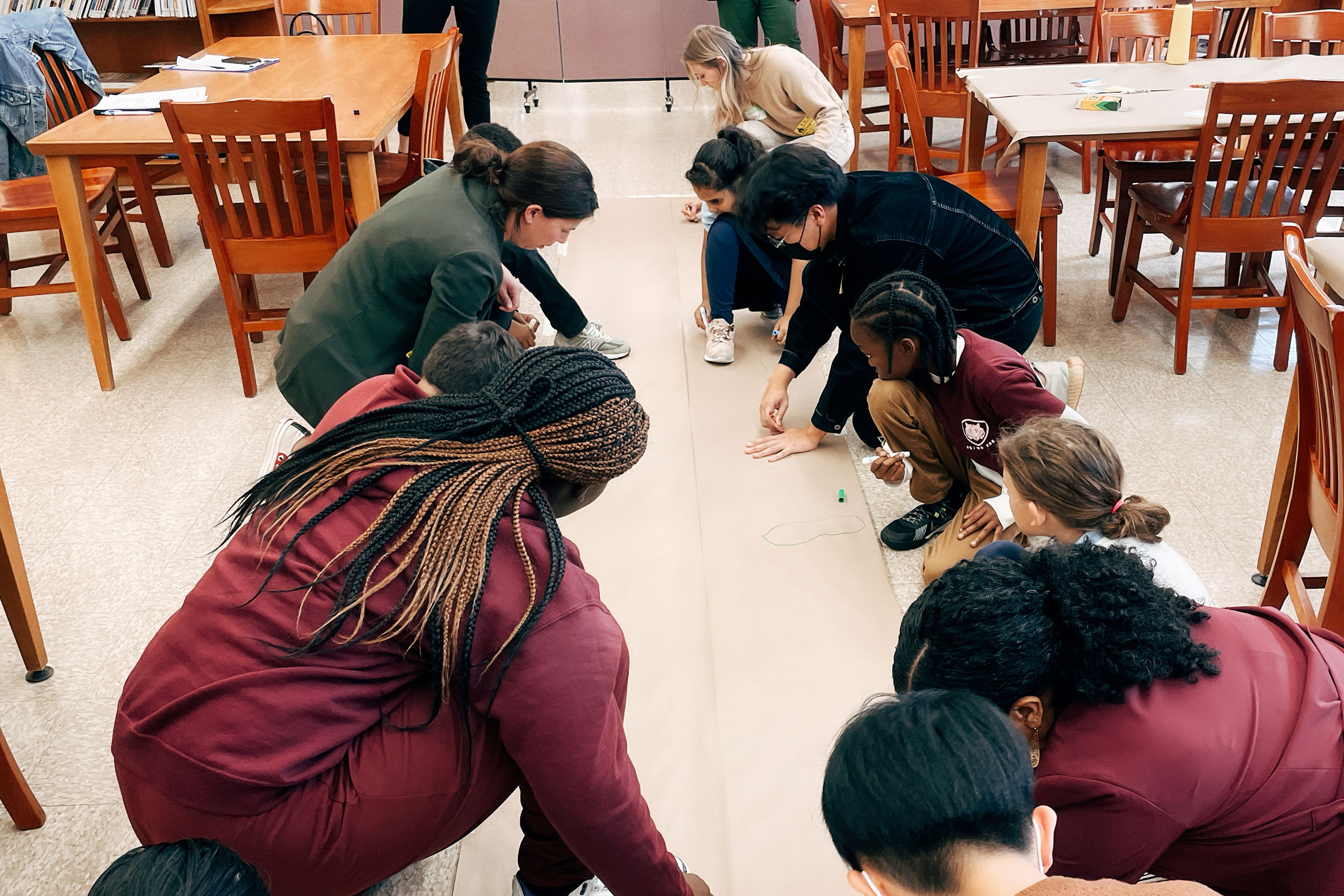
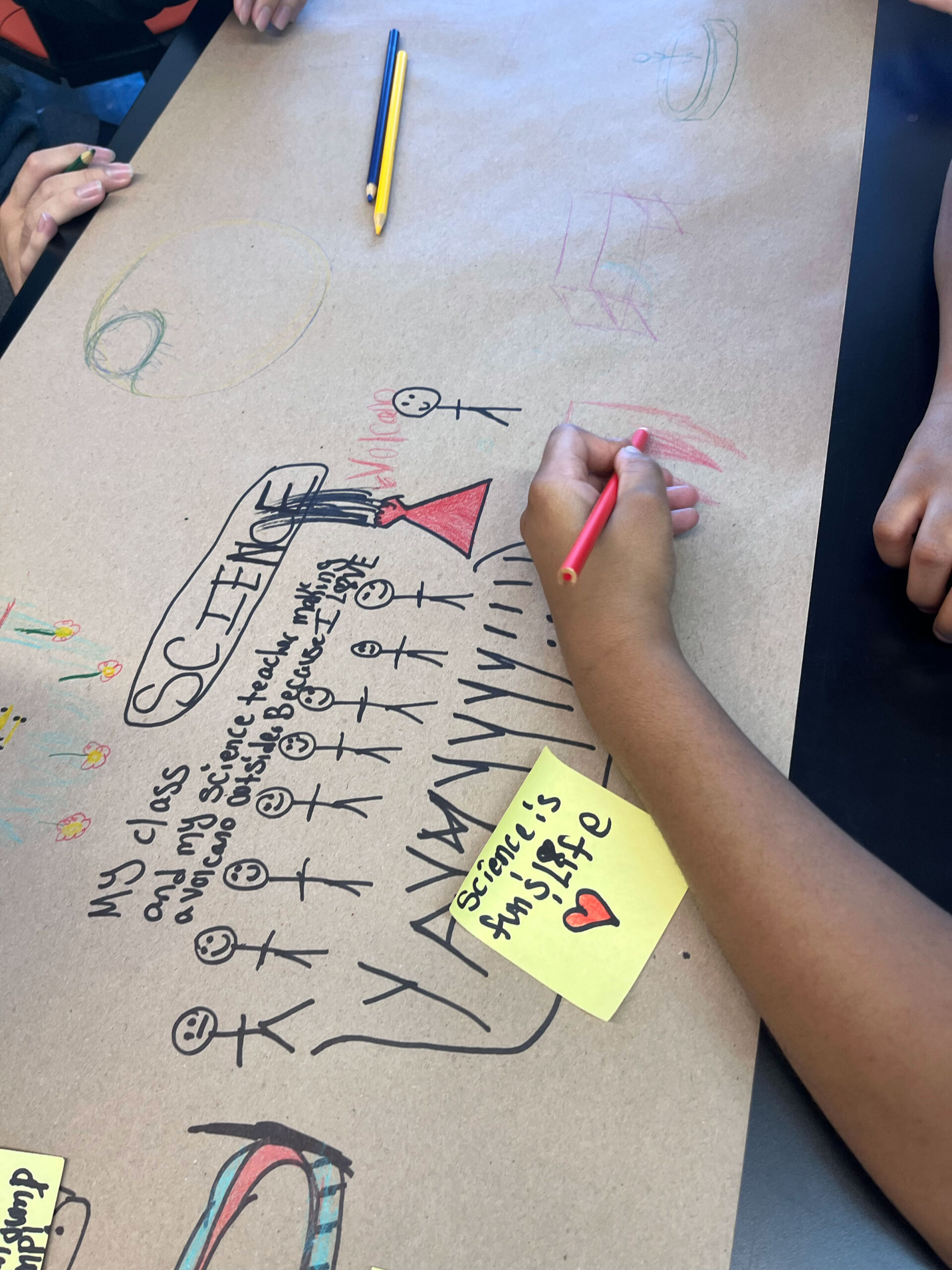
Schneid co-taught Learning Scapes with Hannah Berkin-Harper, an adjunct associate professor of industrial design at Pratt who regularly works on design for public space as the design lead at the New York City nonprofit Street Lab. In the class, teams of design students worked with two NYC Department of Education Office (DOE) school campuses: PS 206/MS 206 in East Harlem and PS 298/BCMS in Brownsville. Together, they explored how the schools’ under-utilized outdoor spaces could be activated through new prototypes for outdoor learning. Aiming to create safe and inclusive spaces for active recreation, student engagement, and mental wellness, the Pratt students considered alternative uses of exterior spaces when outdoor learning is not possible, space sharing between schools and communities, and design for varying uses of space over time.
“Learning Scapes was grounded in an ethos of mutual listening and collaboration,” Schneid said. “It celebrated a design process that actively engaged all partners in all aspects of the work, from project framing and goal definition to design development, presentation, and assessment. Our students learned firsthand the power of accountability and deep listening, and worked diligently to reflect community feedback in all iterations of their design work.”
The Pratt students were encouraged to consider how these spaces were especially essential in a school environment reshaped by the pandemic, where the classroom and playground blurred in the need for more outdoor space. Their research also delved into the historical disinvestment in outdoor space for children in these neighborhoods, inequities that can have a major impact on education and health.
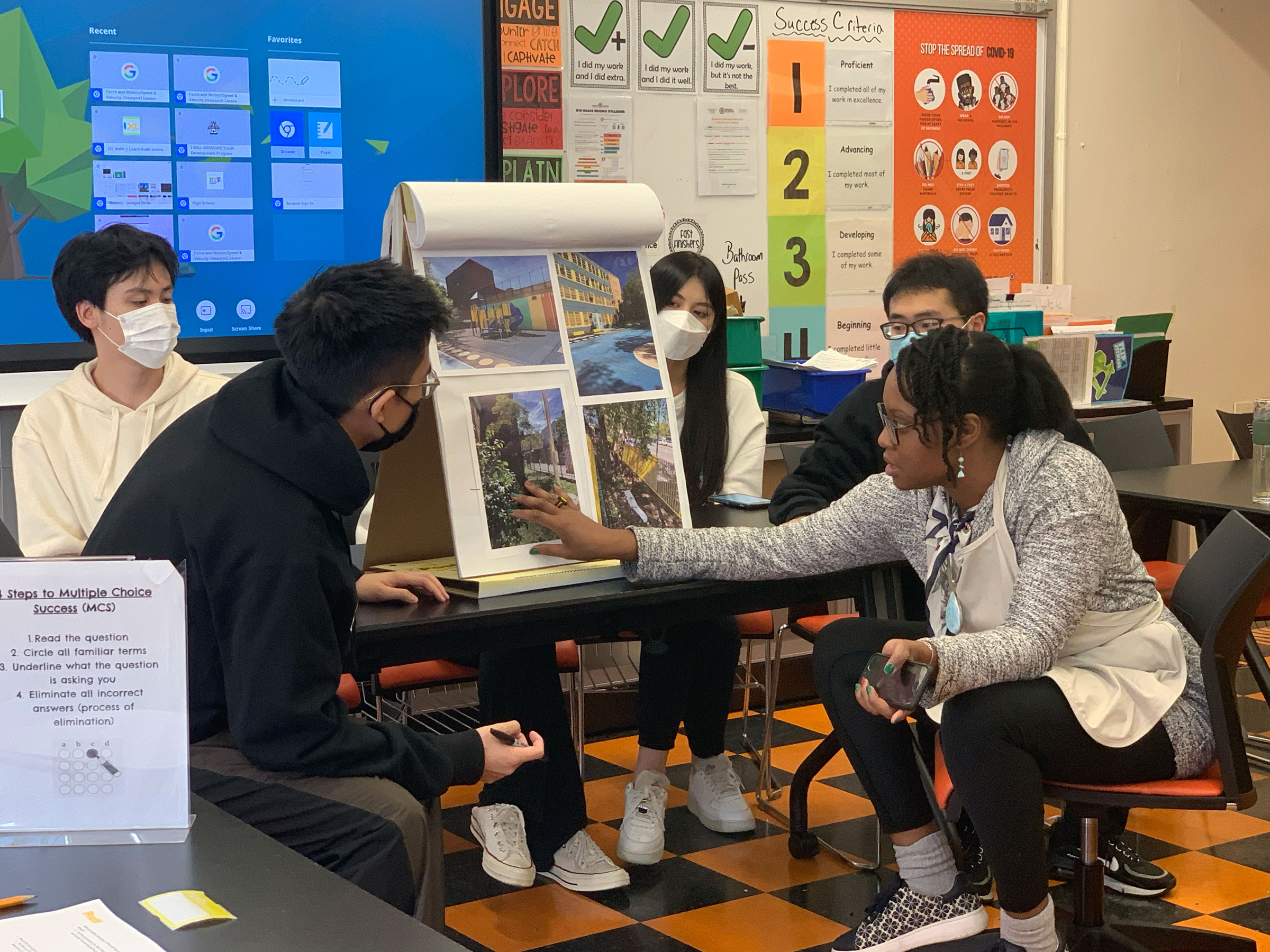
In addition to the NYC DOHMH’s Active Design in Schools Program, the studio was created in partnership with the DOE School Wellness Programs, Equity Design, and Pratt’s Center for Art, Design, and Community Engagement K-12. The Pratt students heard from the K-12 students as well as their teachers, gym instructors, and maintenance and gardening staff in listening and visioning sessions to understand what they lacked, needed, and wanted. Feedback from these sessions included considerations about security and access, safety, socio-emotional learning, transportation, programming, oversight, organization, and zoning of outdoor space.
“The Learning Scapes studio was a very different studio experience,” said Kelly Xiao, BFA Interior Design ’23. “I really enjoyed being able to work and collaborate with people in our community. It was really exciting to be able to participate and gain insights of real-world design and collaborative work experience in a design studio, and see the project come together from the very beginning to the end.”
Their final prototypes after a semester of conversations included designs for semi-permanent murals on the ground, wall, and fences to offer vibrant art and privacy, flexible seating, shade systems, gardening spaces, and transformable classroom layouts, all with a consideration of context, budget, and community needs. Following a final presentation with community partners, students worked to reformat their proposals to contribute to a draft of an Active Schoolyard Toolkit, sharing various options for configuration, context, and use of their designs for distribution to all NYC public schools as a part of a wider resource.
“This studio was an amazing example of how students can co-design with real community partners to deliver tangible results,” said Berkin-Harper. “Each of the elements the students added to the toolkit can be traced back to the listening and visioning sessions and information the students gathered on site. Our community partners were outstanding in guiding students through this complex design challenge.”
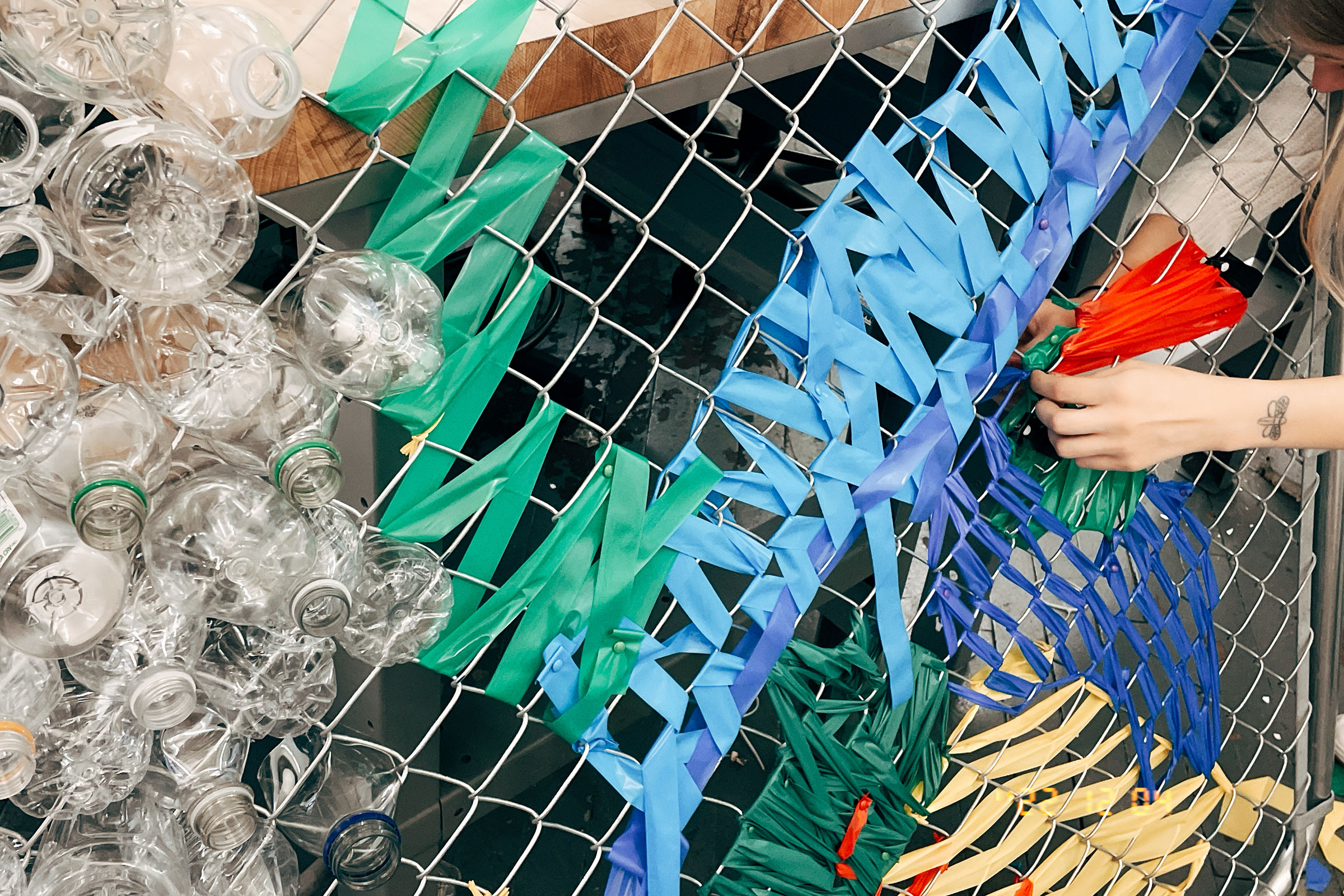
This Co-Design studio is only one part of the inaugural year of Co-Design, with an Interplay: Ethics and Tactics of Co-Design theory seminar course also furthering collaborative approaches to design across disciplines. Focusing on the formative stages of collaboration and community building, the Interplay course establishes the foundational skills students need to work in a collaborative design capacity. Working in partnership with different research centers on campus, students learn how to collectively create knowledge, share leadership, design with empathy, and work outside disciplinary norms.
“Contrary to the way I thought of design before, the tactics of co-design highlighted the need of the community and placed a huge emphasis on interpersonal relationships,” said Ashira Goldberg, BFA Interior Design ’24. “I was challenged to look beyond the final product and into the process. I feel like we often lose sight of who we are creating for and the criteria that determine good art and design, and this class gave me a whole new approach to my projects.”
The Co-Design studio is continuing this spring with a partnership with the Gotham Professional Arts Academy, where Pratt students will be working with the school on designing a collaborative exhibition and gathering space in their library. The experience of the Co-Design studio will inform how the School of Design develops and evolves its community-engaged courses, pedagogy that will in turn be shared with faculty and staff across the Institute. The goal is to spark collaboration and interaction on campus and beyond so that all students leaving Pratt are inspired to work with rather than just for their communities.
